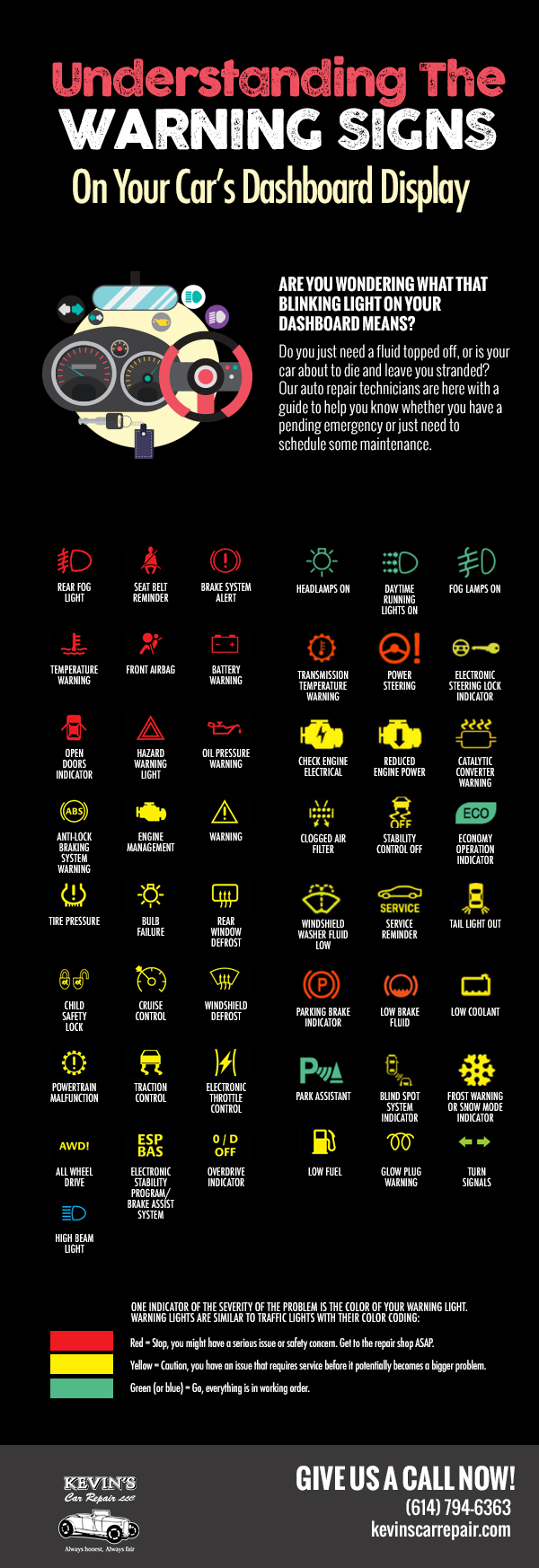Deciphering Your Automobile'S Caution Indicators: What They Really Signify
Deciphering Your Automobile'S Caution Indicators: What They Really Signify
Blog Article
Uploaded By-Lim Dalgaard
When you lag the wheel, those radiant warning lights on your control panel can be a little bit complicated. Do you understand what they're trying to inform you about your auto's wellness? Recognizing the value of these lights is important for your safety and the durability of your lorry. So, the next time one of those lights pops up, would not you wish to understand its message properly and take the necessary actions to resolve it?
Common Caution Lighting and Interpretations
Determine usual caution lights in your automobile and comprehend their definitions to ensure secure driving.
One of the most normal warning lights include the check engine light, which indicates problems with the engine or emissions system. If this light begins, it's vital to have your lorry inspected quickly.
The oil pressure advising light shows low oil stress, needing instant attention to avoid engine damage.
A flashing battery light might recommend a faulty billing system, potentially leaving you stranded if not attended to.
The tire pressure monitoring system (TPMS) light signals you to low tire pressure, impacting automobile security and fuel effectiveness. Ignoring this might lead to hazardous driving problems.
The abdominal light indicates a trouble with the anti-lock braking system, jeopardizing your capacity to quit promptly in emergency situations.
Lastly, the coolant temperature level advising light warns of engine overheating, which can lead to severe damage if not settled swiftly.
Recognizing these usual warning lights will certainly aid you resolve concerns quickly and preserve secure driving problems.
Importance of Prompt Interest
Comprehending the common caution lights in your auto is only the first step; the relevance of immediately attending to these cautions can't be emphasized sufficient to ensure your security on the road.
When a caution light illuminates on your control panel, it's your car's method of communicating a prospective issue that needs interest. Ignoring these warnings can lead to extra serious problems later on, jeopardizing your safety and security and potentially costing you much more in repairs.
Trigger attention to alerting lights can protect against break downs and accidents. For instance, a flashing check engine light could indicate a misfire that, if left ignored, could cause damages to the catalytic converter. Resolving this quickly can save you from a pricey fixing.
Likewise, a brake system cautioning light may signal reduced brake liquid or used brake pads, important elements for your safety when driving.
DIY Troubleshooting Tips
If you notice a warning light on your dashboard, there are a couple of DIY troubleshooting suggestions you can try prior to looking for specialist aid.
The very first step is to consult your automobile's guidebook to recognize what the details caution light suggests. Often the concern can be as straightforward as a loose gas cap setting off the check engine light. Tightening up the gas cap might deal with the trouble.
https://audiecutuning49517.ziblogs.com/31303575/the-five-major-myths-of-automobile-outlining-clarified-and-eliminated is a reduced battery, which can set off different cautioning lights. Inspecting https://www.wlbt.com/2022/02/25/police-man-charged-with-murder-after-allegedly-shooting-customer-hazlehurst-auto-shop/ for corrosion and guaranteeing they're protected could deal with the problem.
If a warning light persists, you can attempt resetting it by detaching the car's battery for a couple of mins and afterwards reconnecting it. In addition, inspecting your lorry's liquid degrees, such as oil, coolant, and brake fluid, can aid troubleshoot warning lights related to these systems.
Final thought
To conclude, comprehending your vehicle's caution lights is essential for maintaining your automobile running smoothly and securely. By quickly resolving these notifies and understanding what they mean, you can stay clear of expensive repair work and possible malfunctions.
Remember to consult your automobile's handbook for particular information on each warning light and act as necessary to ensure a hassle-free driving experience.
Stay informed, stay risk-free on the road!
